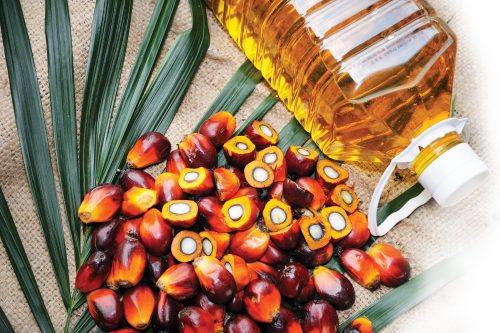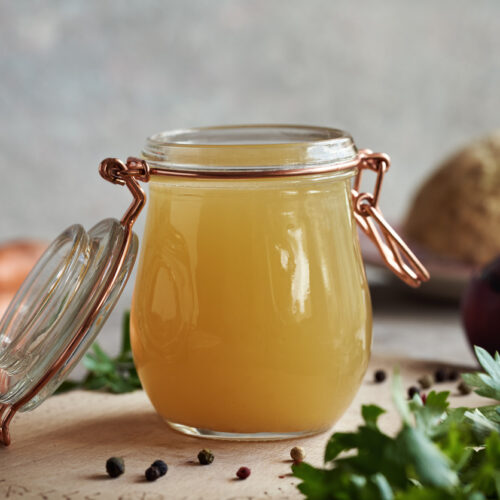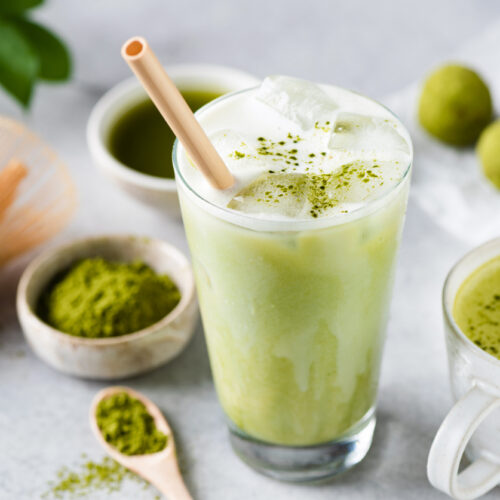
Journalist Amberleigh Jack brings us the latest on palm oil product labelling in New Zealand, and how to spot where it’s hiding.
Making the decision to eat more healthily often involves looking at ingredients lists and nutrition panels on product labels so you can see just what you’re consuming. The trouble is, sometimes labels aren’t that clear. For instance, did you know the ingredient palm oil can hide behind the name ‘vegetable oil’ and there’s currently no law against that?
“Hiding palm oil behind generic labelling … is not acceptable in this day and age,” says Green Party MP Mojo Mathers.
Ms Mathers is vocal about recent attempts to make food labelling for palm and other oils mandatory in New Zealand and Australia. She supports such a policy, saying, ‘there is no excuse for consumers to be kept in the dark about what they are eating’.
What is palm oil?
On a global scale, about 62 million metric tonnes of palm oil is produced annually, making it the world’s most consumed vegetable oil. It’s also one of the most controversial.
Environmentally, its production is known to be a major cause of illegal deforestation and is implicated heavily in the endangerment of the Sumatran tiger, Asian rhino, Asian elephant and Sumatran orangutan. It’s very high in saturated fat too, which the Ministry of Health recommends keeping to a minimum.
Known for its creamy texture and high yield at a low cost, palm oil is produced from palm fruit, mainly in Indonesia and Malaysia. It’s versatile and cheap and is thought to be found in up to 50 per cent of supermarket food and non-food items.
It’s commonly found in ‘treat’ foods, such as biscuits, sweets, bakery items, pastry, ice cream and chocolate fillings, and can be used as a frying oil in fast foods.
Due to its versatility, it can also be found in a lot of other foods such as spreads, snack bars and animal feed. It can also be found in non-food products such as soap, detergent and cosmetics.
Hidden in plain view
In New Zealand and Australia, companies don’t have to declare palm oil in ingredients. Instead, it can be labelled generically in ingredients lists, commonly as vegetable oil, making it indistinguishable from other plant oils.
From a health perspective, this would not be a major issue – if all vegetable oils had the same properties. But they don’t. Plant-based oils are known to be low in saturated fat. But coconut and palm oils are very high in saturated fat.
Recommendations were first put forward to ministers of the Ministerial Forum of Food Regulation (the team that make food policy in Australasia) in 2008 to label oils and fats specifically, and public and industry support has grown since then. A mandatory palm oil labelling campaign, Unmask Palm Oil, has been active for about eight years.
Campaign manager Ben Dowdle says market research company UMR polls indicate that more than 90 per cent of New Zealanders and more than 80 per cent of Australians support consumers’ right to make informed food choices. In New Zealand, all four major zoos and numerous health professionals support mandatory labelling.
So, the question stands, why is there still no regulation in either Australia or New Zealand?
Obstacles to mandatory labelling
Previously, Food Standards Australia New Zealand (FSANZ) rejected an application for mandatory labelling because the emphasis was on environmental factors and Mr Dowdle thinks this is still an issue.
An emphasis on health concerns might be key. For example, plant oils that people might be allergic to, such as peanut, sesame and soy oils are required to be labelled by name.
“I guess policy officials are struggling with health reasons and environmental reasons being mutually exclusive,” he says.
“There’s a real lack of accountability because the decision is made across 10 jurisdictions [from both Australia and New Zealand]. It’s almost like, ‘we’re just one of 10, so we don’t have much power’.”
On 28 April this year, ministers met in Adelaide to discuss entering the next phase of creating new labelling policy. They decided to continue looking into the idea, which includes further consumer research. A progress report will be presented at the next forum meeting.
Why does it matter?
So why all the fuss, anyway? There are two main issues when it comes to palm oil. The first is the environmental. Ms Mathers says the ethical and environmental factors of palm oil production are many.
“Palm oil companies have been involved in destroying rainforests, threatening iconic species and contributing to damaging climate change,” she says.
“Some have also been implicated in serious human rights abuses such as child labour.”
There are sustainable plantation methods available and some companies have chosen to be transparent about their sustainable palm oil use. Although, according to Ms Mathers, this can ultimately hurt the company, which may face consumer backlash.
“[Voluntary transparency] does not help the rainforests, as consumers often unknowingly just switch to another product containing palm oil [from unsustainable sources].
“Only a mandatory labelling system will create a level playing field and ensure that there is an incentive for companies to switch to palm oil from certified sustainable sources.”
A matter of health
The second major concern is the potential health effects of palm oil through its high saturated fat content.
It’s important for people to ensure they get plenty of good fat in their diet, primarily from sources such as nuts, olive oil and avocado. But saturated fat is cause for concern. The Ministry of Health recommends New Zealanders aim to keep consumption below 10 per cent of their daily energy intake, as studies have shown an association between saturated fat and heart disease, liver dysfunction, obesity and type 2 diabetes.
Most people get too much saturated fat, with the average person’s intake at about 13 per cent of energy.
Foods high in saturated fat include fatty meat, coconut cream and full-fat dairy. Plant-based oil is generally low in saturated fat. Using palm oil, instead of healthier plant oils, increases the overall saturated fat content in the food supply.
Where to from here?
So, how can you ensure better food and product choices? These resources are a good place to start:
- Auckland Zoo has created a palm oil-free shopping guide.
- Not-for-profit organisation (POI) has also released a free phone app that can be used to scan product barcodes for palm oil, called the POI Palm Oil Barcode Scanner.
Unfortunately, these things take time and effort, and rely on the re Palm Oil Investigations search of others for information, rather than the word of the manufacturer itself.
It’s easy to feel cynical, but Mr Dowdle believes the policy change will happen.
“It’s eight years slower than we’d like it to be,” he says with a laugh.
“But it’s definitely heading in the right direction.”
Spotting palm oil
Palm oil included in food and non-food products potentially goes under the name of:
- Vegetable oil
- Palm kernel oil
- Anything containing the words ‘palmitate’ or ‘palmate’
- Elaeis gunieensis (scientific name for the oil palm plant)
- Hydrated Palm Glycerides
- Hexadecanoic or palmitic acid
- Anything containing the words ‘stearate, stearyl’
- Anything containing the words ‘cetyl, cetearyl’
- Sodium Lauryl Sulphate (SLS)
- Sodium Laureth Sulphate
- Sodium Dodecyl Sulphate (SDS or NaDS)
- Sodium Stearoyl Lactylate
- Calcium Stearoyl Lactylate
- Steareth -2 and Steareth -20
- Emulsifier 422, 430-436, 465-467, 470-478, 481-483, 493-495, 570
(Source: Auckland Zoo)
Article sources and references
- Auckland Zoo. Buy palm oil free wallet card, aucklandzoo.co.nz/conservation/Documents/buy-palm-oil-free-wallet-card.pdfhttps://www.aucklandzoo.co.nz/get-involved/palm-oil
- Australia and New Zealand Ministerial Forum on Food Regulation. 2017. Communique, foodregulation.gov.au/internet/fr/publishing.nsf/content/8D34B31CEC0210F6CA25810F001A2C24/$File/Final%20Communique%2028%20April%202017.pdfhttp://foodregulation.gov.au/internet/fr/publishing.nsf/Content/forum-communique-2017-November
- Food Standards Australia New Zealand. 2016. Palm Oil, foodstandards.govt.nz/consumer/generalissues/palmoil/Pages/default.aspxhttps://www.mpi.govt.nz/law-and-policy/requirements/food-standards/
- Green Palm. 2014. Palm Oil, Palm Kernel Oil Process - Fractions, Derivatives and Product Uses, slideshare.net/GreenPalmOil/oil-palm-fractions-derivatives-web-33644317https://www.slideshare.net/GreenPalmOil/oil-palm-fractions-derivatives-web-33644317
- Ministry of Health. 2015. Eating and Activity Guidelines for New Zealand Adults. Wellington: Ministry of Healthhttps://www.health.govt.nz/system/files/documents/publications/eating-activity-guidelines-for-new-zealand-adults-oct15_0.pdf
www.healthyfood.com










